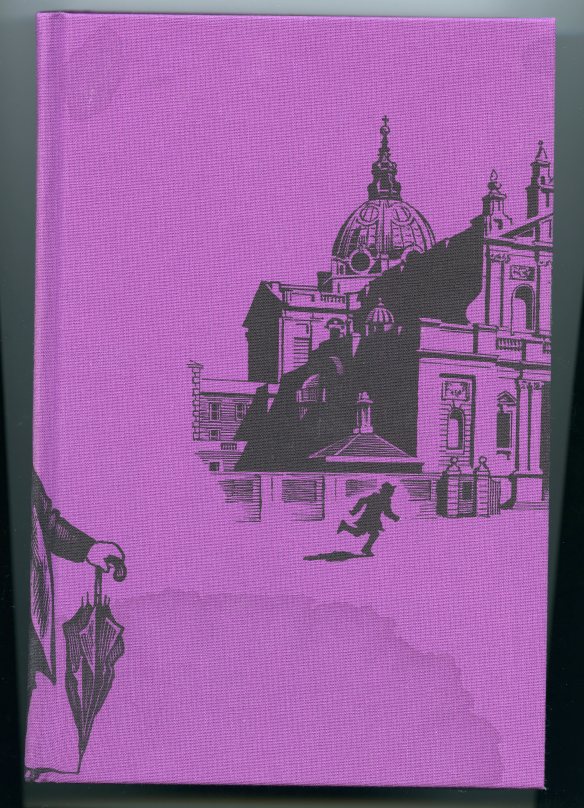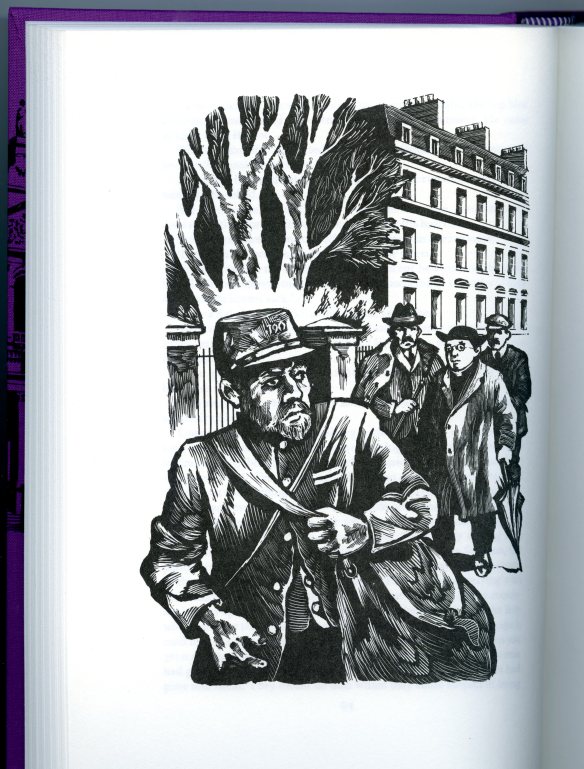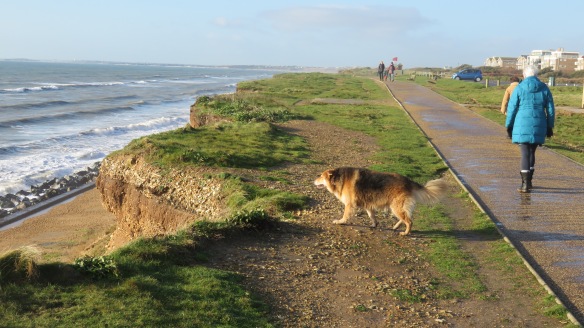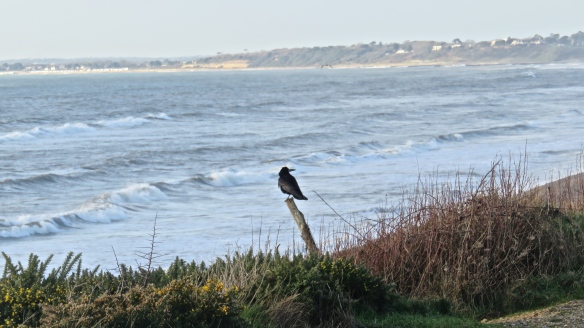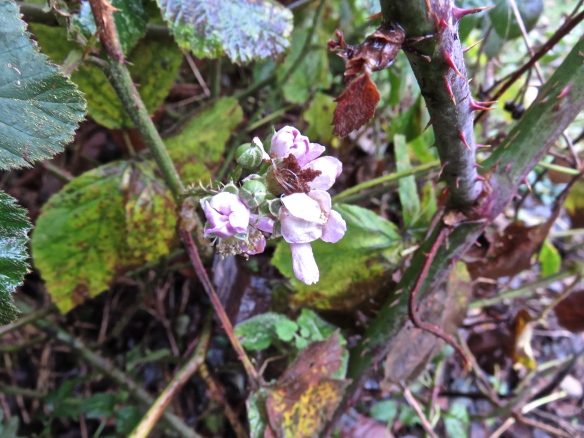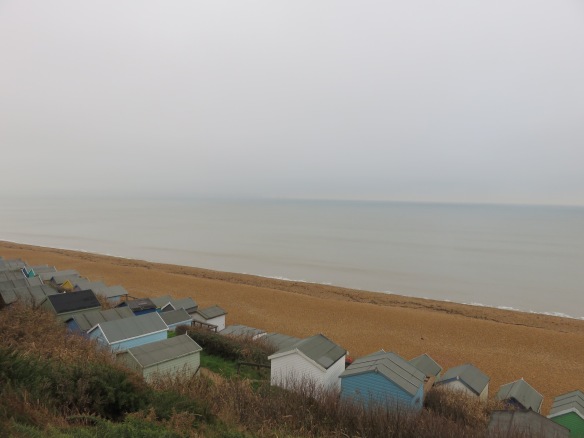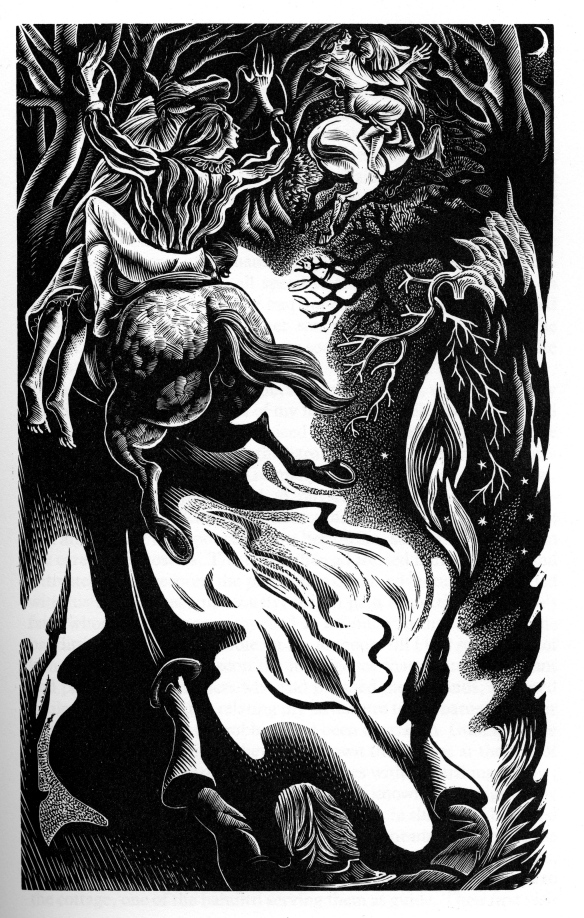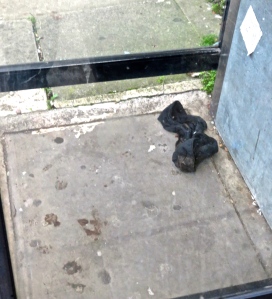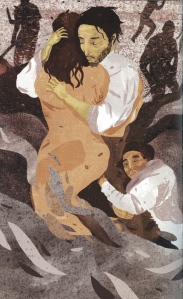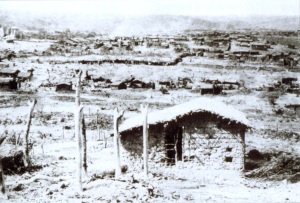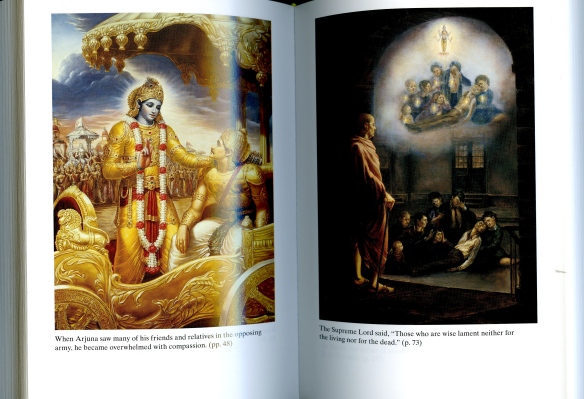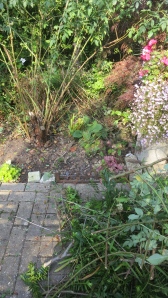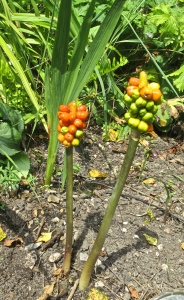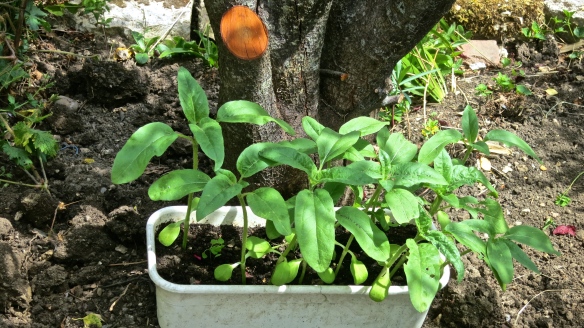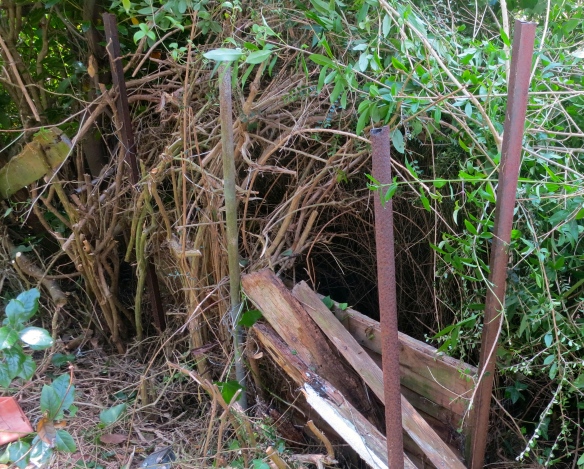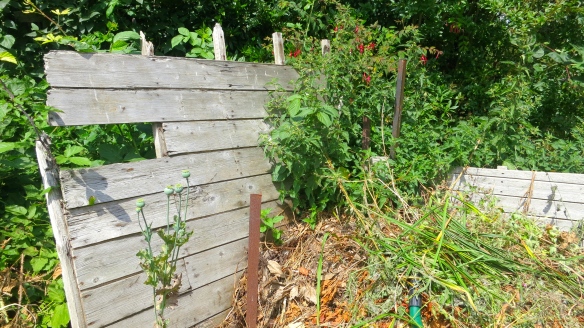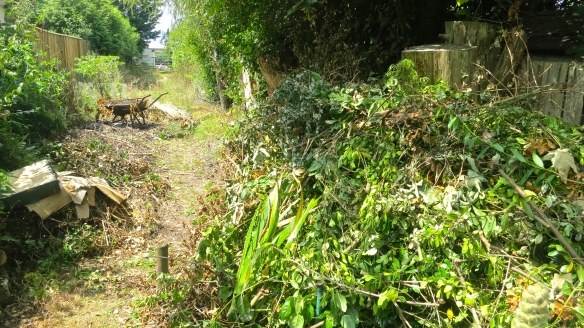We began this morning by Jackie driving me to the Post Office at Milford on Sea to post and Easter present with a card I had made yesterday featuring lambs who first appeared in the second ovine picture illustrating ‘The Nursery Field’.
Soon after we returned home Giles popped in for a visit. Knowing that I was reading G.K. Chesterton’s Father Brown stories, he brought me two published articles that he knew would interest me; one by himself, and the other by Jorge Luis Borges, the Argentine short-story writer who is one of his favourites.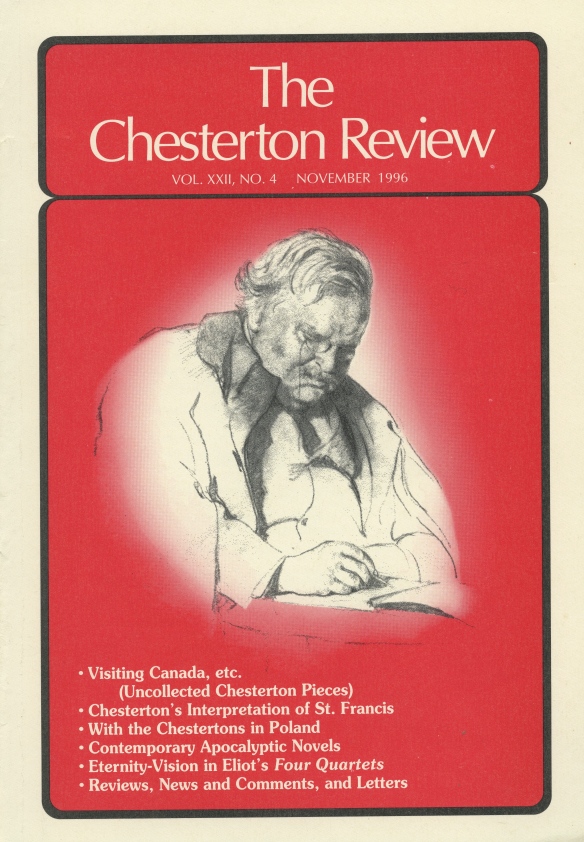
Giles Darvill’s own article was published in The Chesterton Review of November 1996, the cover of which bears rather a good pencil drawing of the subject. Entitled ‘With the Chestertons in Poland’, this deals with a trip the English writer took in 1927. It is based on letters and the log of Giles’s aunt, Dorothy Collins who was Chesterton’s secretary, still working for him at her death sixty two years later.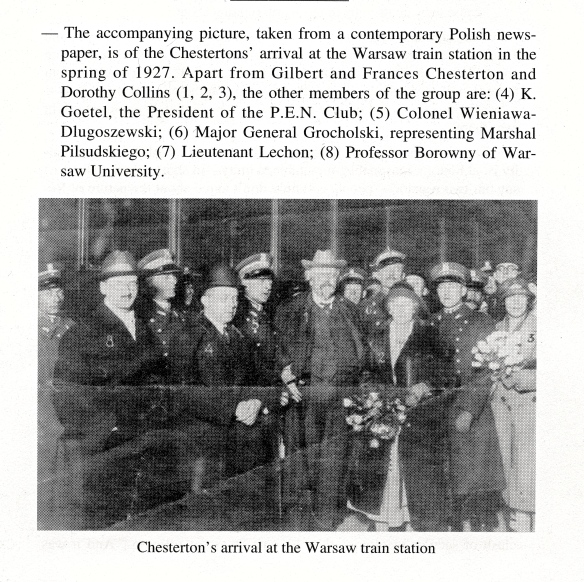
 I couldn’t do much to enhance this photograph featuring the list of people above it, including Aunt Dorothy labelled 3 on the far right.
I couldn’t do much to enhance this photograph featuring the list of people above it, including Aunt Dorothy labelled 3 on the far right.
Borges’s piece is a general observation making comparisons with such writers as Edgar Allan Poe and Franz Kafka.
I read and enjoyed both essays.
This afternoon I took a painful walk around the garden and a few yards into Downton Lane. My difficulty was no doubt brought about by, despite the Dosset box, forgetting to take my breakfast medication.

 I am happy to be able to say that many of the daffodils that Jackie planted on the back drive in the autumn have survived the attention of the small creatures mentioned in ‘Preparing For The Party’.
I am happy to be able to say that many of the daffodils that Jackie planted on the back drive in the autumn have survived the attention of the small creatures mentioned in ‘Preparing For The Party’.
For Christmas, Becky and Ian gave us two garden clocks. One has been placed on the back wall of the house, and the other on the orange shed door at the far end of our plot, seen here through the peeling eucalyptus.
On Downton Lane a black spotted red ladybird was making its way towards bright yellow dandelions.
This evening we dined on rack of pork ribs in barbecue sauce, Jackie’s special fried rice and green beans followed by baklavas. Jackie drank Hoegaarden; I finished the Teroldego Rotaliano and began Blason des Papes Chateauneuf-du-Pape 2011.
